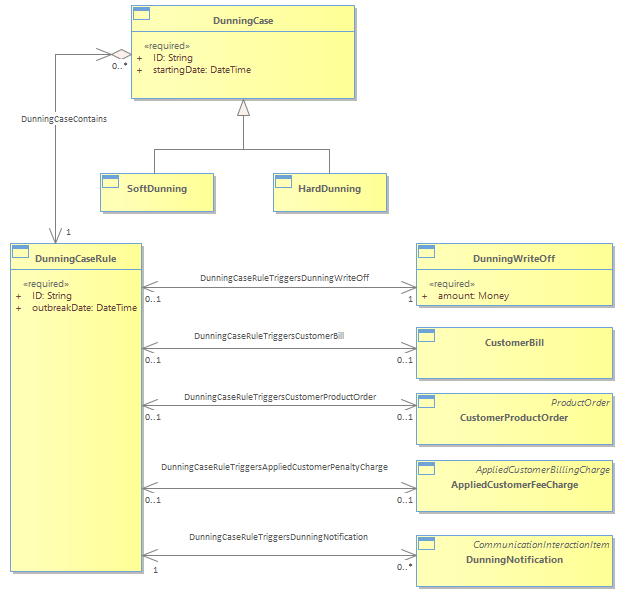Figure C.23 - Dunning Result

|
Project:
|

Figure C.23 - Dunning Result : Class diagram
The diagram below presents the different type of actions resulting from a dunning process.
When a dunning process is triggered, it will first create a SoftDunning. At this stage the provider/operator starts to get in touch with the payer. And without result, we get in touch with the holder. Finally, after restriction measures, the entire holder’s contracts are removed and a closing invoice is produced. Once the closing invoice is produced, a HardDunning starts. According to the law, several interactions will be done with the holder and finally a DunningWriteOff is credited. Each time DunningRule events occur, a DunningCaseRule is triggered to apply it. If the condition specified by the DunningRule is true, then one or several actions are done. The different types of dunning actions are the following: • One type of dunning action may be to interact with the customer to ask for a CustomerPayment or negotiate a PaymentPlan; • Another type of dunning action may be to apply penalty for overdue debt (AppliedCustomerPenaltyCharge that is a type of Charge); • Another type of dunning action may be to create a CustomerProductOrder that will apply a limitation Product on the customer’s existing Products (Ex: limit to national calls) and even a CustomerProductOrder that will remove all the Customer’s Products and ProductOfferingSpecifications. When all the Customer’s Products and ProductOfferingInstances are removed a closing CustomerBill is produced, including the rented material goods price; The last action done by the Dunning process is to produce a DunningWriteOff. |


